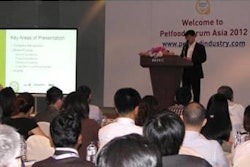Geelen Counterflow's president Sander Geelen suggests that in order to properly understand a modern counterflow dryer, one could draw a parallel with hybrid drive cars which are now very popular because of their superior fuel efficiency.
"First of all those hybrid drive cars usually use fuel efficient engines (Atkinson cycle or direct injection) to ensure the highest possible efficiency when running on gas or diesel. Our dryers exclusively use the counterflow principle which is scientifically proven to be the most efficient method to exchange energy between any two flows of gasses, liquids or solids. By applying this principle in our dryers we can minimise the amount of drying air we need and maximise the amount of energy that can be transferred. This results in a lower air exhaust volume and a lower exhaust air temperature.
Then, hybrid drive cars are well known for energy recovery. When the driver brakes, the mechanical energy is transformed into electrical energy and stored in the batteries which are used to drive an electric motor. In counterflow dryer-coolers we can recover the product heat which is injected by hammernills, conditioners and extruders. That energy is recovered from the cooler in the form of warm air. All of that warm air can be re-used as make-up air for the dryer. However, it is important to properly design coater, cooler and air system to make sure that the warm air is sufficiently clean when entering the dryer. In addition, each counterflow dryer has internal air recirculation systems which ensure that only air with a very high relative humidity passes the exhaust fan. For a typical petfood dryer this means that only 25-30% of total drying air is ever exhausted.
Next is the fuel economy meter. Hybrid cars measure many variables very accurately, such as speed, distance travelled and fuel consumption. Those data are calculated continuously to show the car's fuel economy. Driving at full speed and braking often will drive up the fuel consumption of even the most efficient car. The same is true for dryers. Even the most efficient dryer can waste energy if not controlled properly. The key is to ensure that all of the relevant process variables can be accurately measured and controlled in real-time. Product flow rate, moisture percentage, air volume, air temperature and drying time must all be measured and controlled. Variables such as air volume and air temperature must even be controlled in each individual stage of the drying process (which typically consists of between 2 and 8 stages, depending on evaporation load). To be able to measure and control air volume accurately at every drying stage, it is critical that the dryer is completely sealed from the ambient environment. This is impossible to achieve in nearly every other type of petfood dryer. Calculating the mass and energy balance of the dryer in real-time, allows us to show the operator how many kJ. or BTU is being used for every kg. or lbs. of water evaporation. Like every other process of improvement and optimisation, everything starts with measuring accurately and continuously.
And then there is cruise control. Drivers want their cars to stick to the chosen speed, independent of hills, wind etc. Behind that technology is an advanced control loop that measures one variable (speed) and influences another (fuel injection). The control system knows exactly how much to correct under each set of circumstances. The result is a much better fuel economy because even the best driver will not be able to avoid variation of speed, which drives up fuel consumption. Operators of petfood dryers want their dryers to always deliver the exact same moisture % for that particular product, independent of variations in raw material or weather. In counterflow dryers we employ an accurate planar microwave sensor in the dryer hopper, which performs on-line measurement of moisture %, product temperature and bulk density. The moisture signal is used to fine-tune the temperature of drying air, such that the dryer reacts automatically to any deviation from setpoint.
And finally, navigation. Not exclusive to hybrid drive cars of course, but usually standard because it reduces fuel consumption. The more direct route to your destination, the less fuel is wasted. In counterflow dryers we show operators the way to their target moisture. The control screen shows the operators the actual moisture, temperature and air volume in each drying stage. When a new product recipe is selected, a preferred drying curve is loaded into the control system that leads the operator to the desired target. It is as if the driver of the hybrid car can just select the destination in his navigation system and the car takes care if everything else.
All of the above technologies combine to achieve an energy efficiency on the drying of extruded petfood of 2500 kJ per kg. of evaporated water, which is at least 20% better than any available alternative and up to 50% better than a 10-15 year old horizontal dryer. A 10 tph conveyor dryer that is 10-15 years old, running 6000 hours per year, will use US$ 450.000 to 750.000 worth of gas. With a modern counterflow dryer that number can be reduced by US$ 150.000 - 400.000 per year. Add to that the fact that gravity flow enables very high mechanical reliability and a much lower cleaning frequency and the payback calculation is straight forward. Counterflow dryers already have over 50% market share in countries such as Japan, France, Spain, Italy, Belgium, Netherlands and Argentina.
















